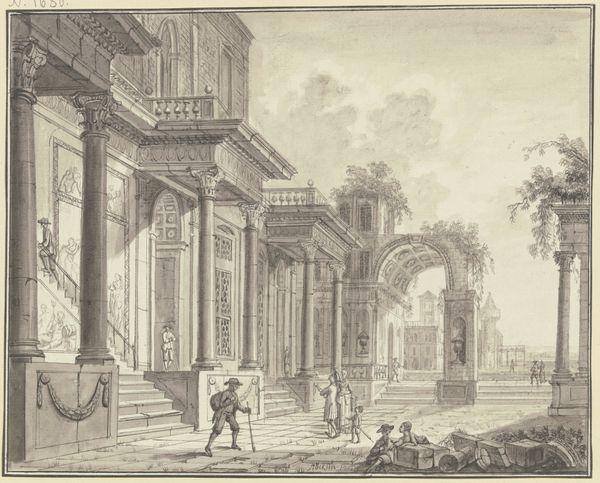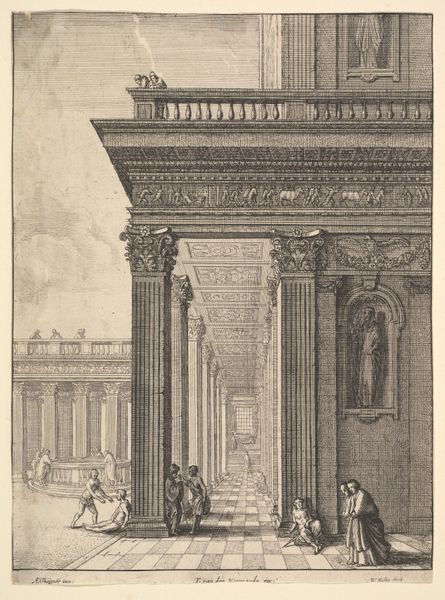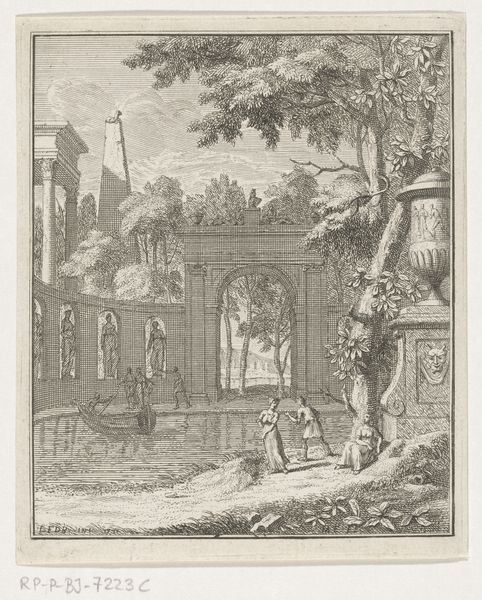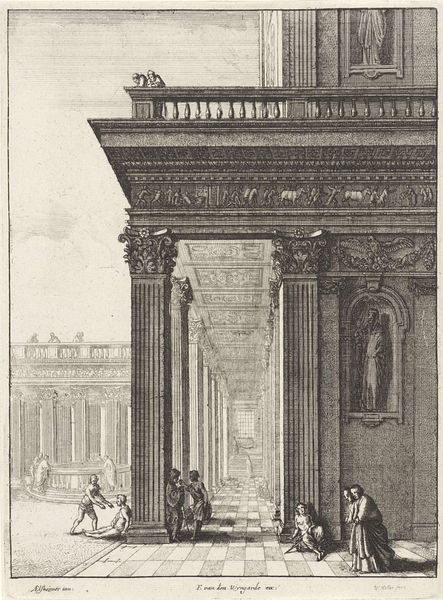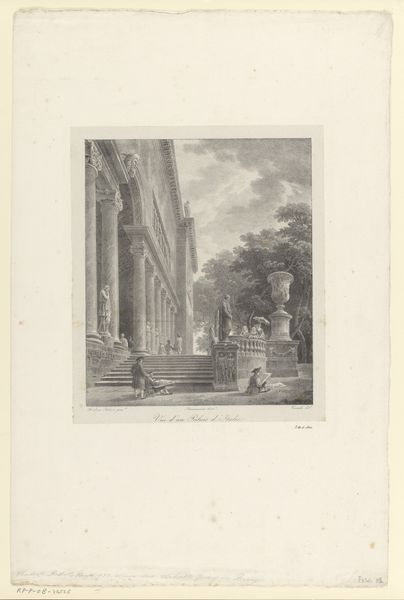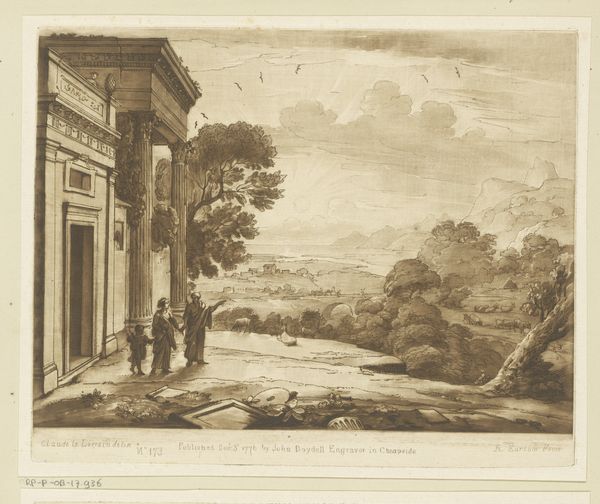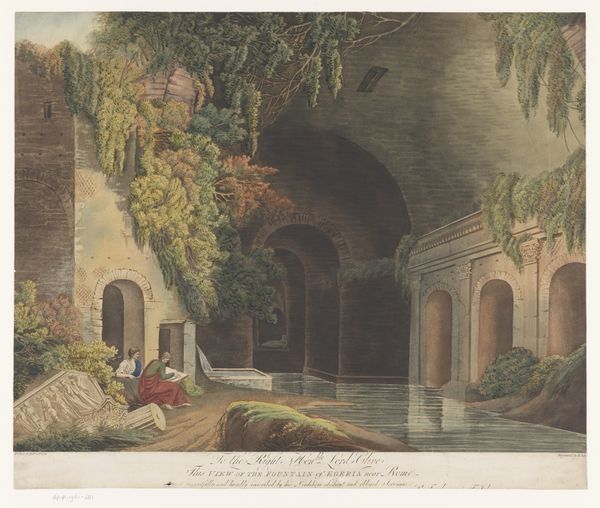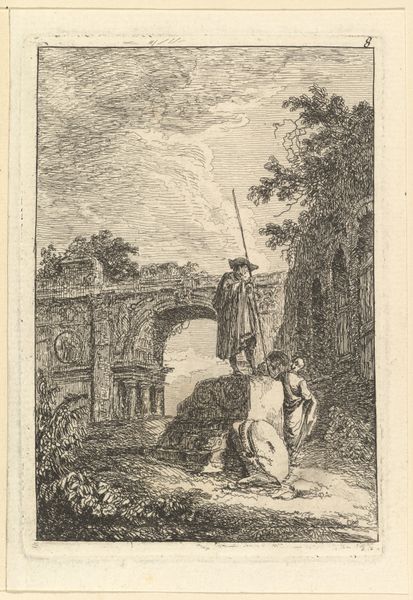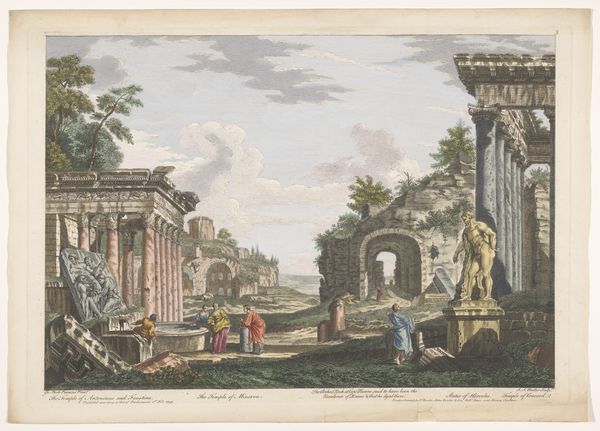
drawing, print, etching, architecture
#
drawing
#
historical design
#
neoclacissism
# print
#
etching
#
landscape
#
perspective
#
cityscape
#
academic-art
#
architecture
Dimensions: height 364 mm, width 262 mm
Copyright: Rijks Museum: Open Domain
Curator: This print, dating back to 1776, presents Jean-François Janinet's "View of the Villa Medici," held in the Rijksmuseum collection. Janinet employs etching techniques to showcase this architectural landscape. What impressions does it give you? Editor: I am struck by its serene, almost theatrical quality. The interplay of light and shadow seems carefully staged, enhancing the grand scale of the architecture, there's a sense of learnedness, and a reaching for timelessness. Curator: The Villa Medici itself played a significant role in art history, especially during the 18th century, it represented French power and artistic influence in Rome, influencing neoclassical aesthetics back in France. Editor: Absolutely. We see this embodied in the motifs—the statues, urns, and classically inspired facade elements speak of wealth and authority. More than that, the image seems to declare: this place *knows* history, *breathes* history, *creates* history, *owns* history. Curator: Precisely! The print would circulate amongst a specific social class. Beyond its function as a topographical record, the image underscores social connections to that kind of learned culture, as Neoclassicism itself becomes almost a type of branding. Editor: Observe too the placement of figures, absorbed in their own leisured pursuits—drawing, reading. The villa and its art offer fertile ground for contemplation, signaling its privileged, erudite context. It even includes a personal coat of arms for the Comte de Baudouin. Curator: That's right. The architectural precision is combined with genre scenes depicting its privileged inhabitants and visitors, further embedding it within its socio-political sphere, reminding its intended audience that history serves a purpose within a power dynamic. Editor: Thinking about its symbolism, it captures not just a building but a certain cultural aspiration, an idea of civilized life rooted in historical precedent. Thank you, I see the villa very differently now. Curator: The pleasure was all mine, delving deeper into Janinet's print illuminates a slice of eighteenth-century society that prized visual encoding of political ideology in what appeared to be aesthetic expressions.
Comments
No comments
Be the first to comment and join the conversation on the ultimate creative platform.

